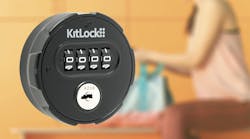New research produced by the Smart Card Alliance and Frost & Sullivan paints a rosy picture for the smart card market for at least the next five years. The research, announced Wednesday, surveyed the North American and Latin American markets and saw great strides in all areas of smart cards, from the SIM cards that cellular phones use to converged access control cards for network and physical security.
Highlights in the research point to more than 132 million smart card microcontrollers shipped to the North American market this year, followed by a compounded annual percentage rate increase of 27.7 percent going through 2010. But it's the emerging Latin American market that really stands out, with an expected 59.1 percent compound annual growth rate through 2010. The Latin American market is expected to see shipments of 136.4 million units this year. The numbers take into account SIM applications, contactless payment solutions, pay TV as well as the government ID and access control usages.
According to Randy Vanderhoof, the executive director of the Smart Card Alliance, the growth in the Latin American market will likely be led by adoption of smart card technology for SIM cards as well as the payment card market. However, it's not that access control and ID security will be forgotten, he says. The market in Latin America, he notes, is one where security and ID badging has been a couple of steps behind the U.S./North American market. While that means the region will have a lot of catching up to do, it also means that the Latin American market is more likely to step straight into smart cards when it does implement access control technology, rather than adopting older technologies like magstripe. Vanderhoof says that he expects Brazil, Mexico and the Carribean to be the Latin American adoption leaders for security systems that base themselves on a smart card platform.
By and large, he says the smart card industry is expecting to see adoption numbers increase for new facilities and companies, especially in Latin America.
"One of the things we look for in adoption of smart cards is where there has not been a significant install base of a competing platform," says Vanderhoof, noting that growth will first come from areas that do not have a legacy system already running.
While the North American market won't have the high compound growth rates of Latin America, Vanderhoof says this is the market where growth of smart cards is most likely to hit the security sector the strongest. The report projects North American growth of the security and ID segment of smart card implementations to bump up from about 7 percent of the total market in 2005 to 22 percent by 2010.
"I think the HSPD-12 and FIPS 201 initiative will be the major driver for this increase in adoption," said Vanderhoof. "The reasons are, first, because state and local governments are going to have to become major buyers as they follow the federal initiative, and secondly, those standards that are resulting from FIPS 201 are going to work their way into the private sector. With these standards, the private sector will become more comfortable adopting this technology."
Vanderhoof also points to the growing convergence in access control between the logical, or IT, needs and the physical security department needs. Nonetheless, he says, it will likely be the physical security sector that's headed to smart cards first.
"Physical security investments [in smart cards] are significantly higher than logical security investments at this time, so I expect physical security to continue to drive the adoption," said Vanderhoof. "But as the convergence occurs, the people who already have a physical security program using smart cards are going to be able to bring in a logical security application as well, resulting in greater cost effectiveness for the smart card technology."
He also credits Sarbanes-Oxley compliance for continuing to drive the convergence of logical card access with the physical security use of smart cards.
This growth in security applications has already interested at least one of the big players in the smart card market. Gemplus, which has been heavily invested in the telephone and payment systems smart card market and had made a presence in the logical security market, made waves earlier this week when it announced that beefing up the company's security options was a possibility. In an interview with Bloomberg financial news, Gemplus' CEO Alex Mandl indicated that acquisitions in the security arena could be a possibility. "We think that in the identity security business, there are certain segments that could further strengthen our overall systems and solutions approach," Mandl told the Bloomberg reporter. The mention of possible acquisitions follows closely behind the company's April 2005 purchase of Setec, a Finnish company that offered smart card-based passport documents.
However, despite the possible interest from Gemplus of expanding their security solutions, Vanderhoof says that he's not expecting a rush of entries into the smart card-based security market, despite the high growth numbers that have been projected. He cites high cost barriers to entering the market at this stage of the game, noting that as card technology becomes more commoditized, "Companies getting in now are going to have a harder time to recoup their investments."
The Smart Card Alliance/Frost & Sullivan research report is available in an executive summary that's available as a free PDF download. The report is also available unabridged from Frost & Sullivan for a cost. Those interested in the full report can contact Frost & Sullivan's James Politis at [email protected] or (210) 247-3875.


